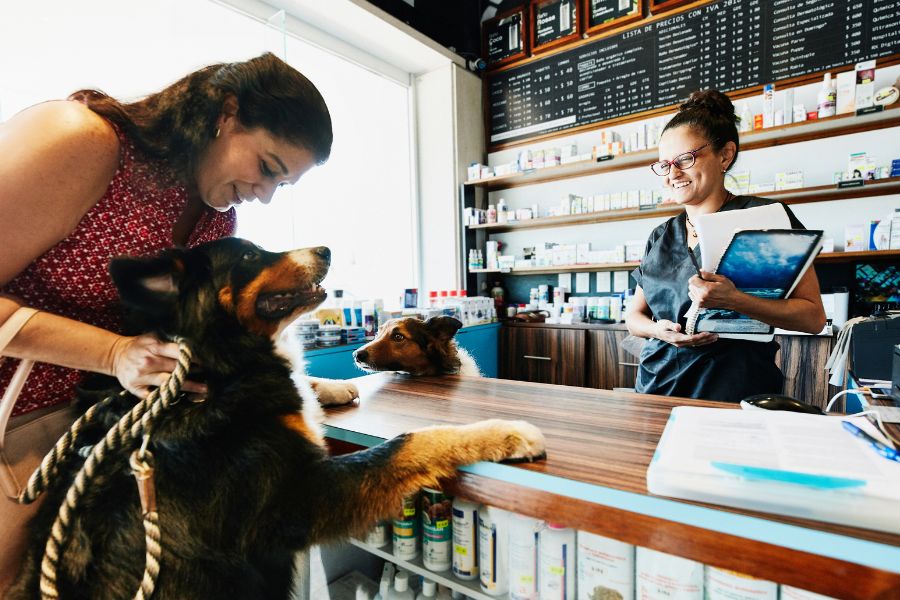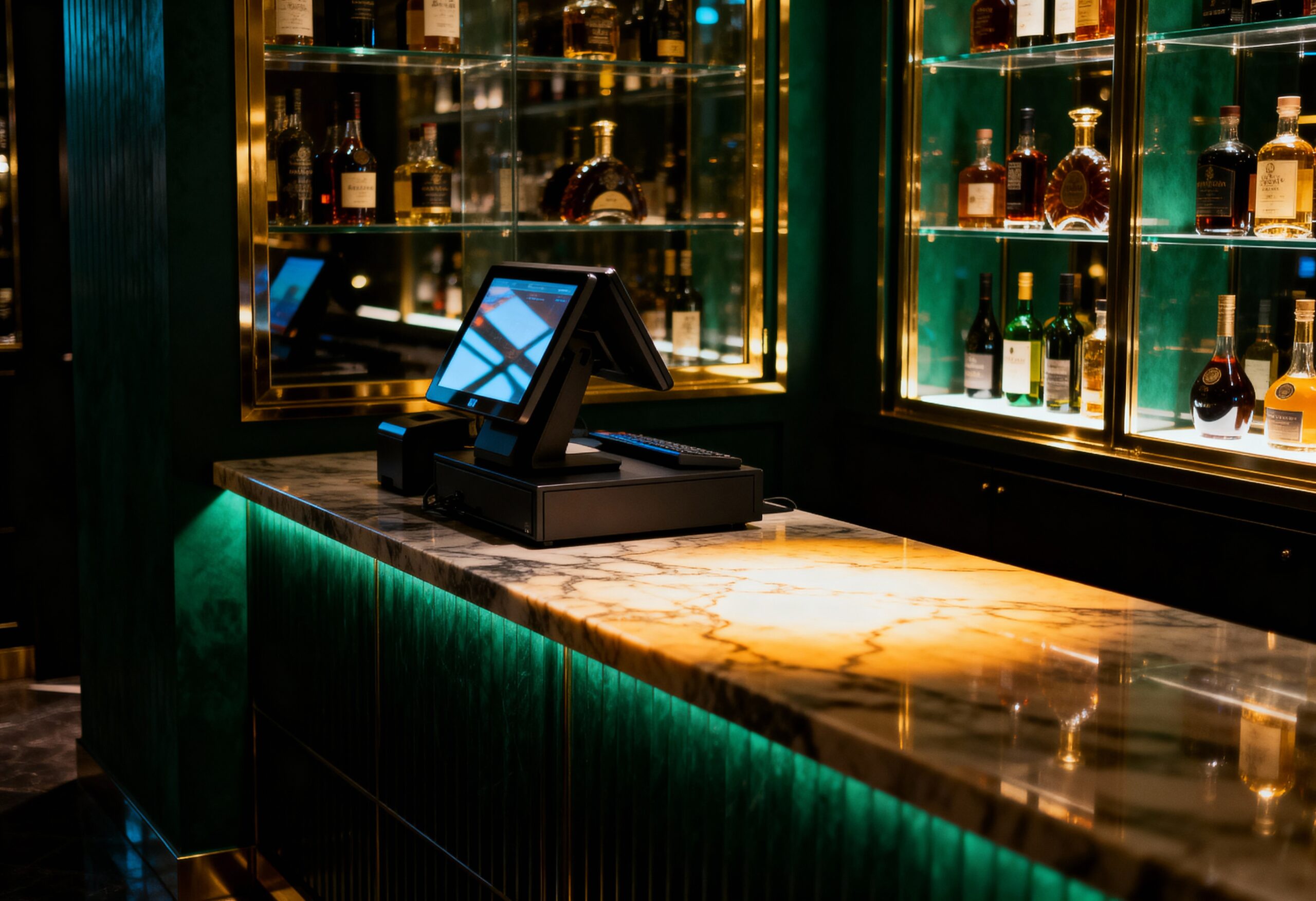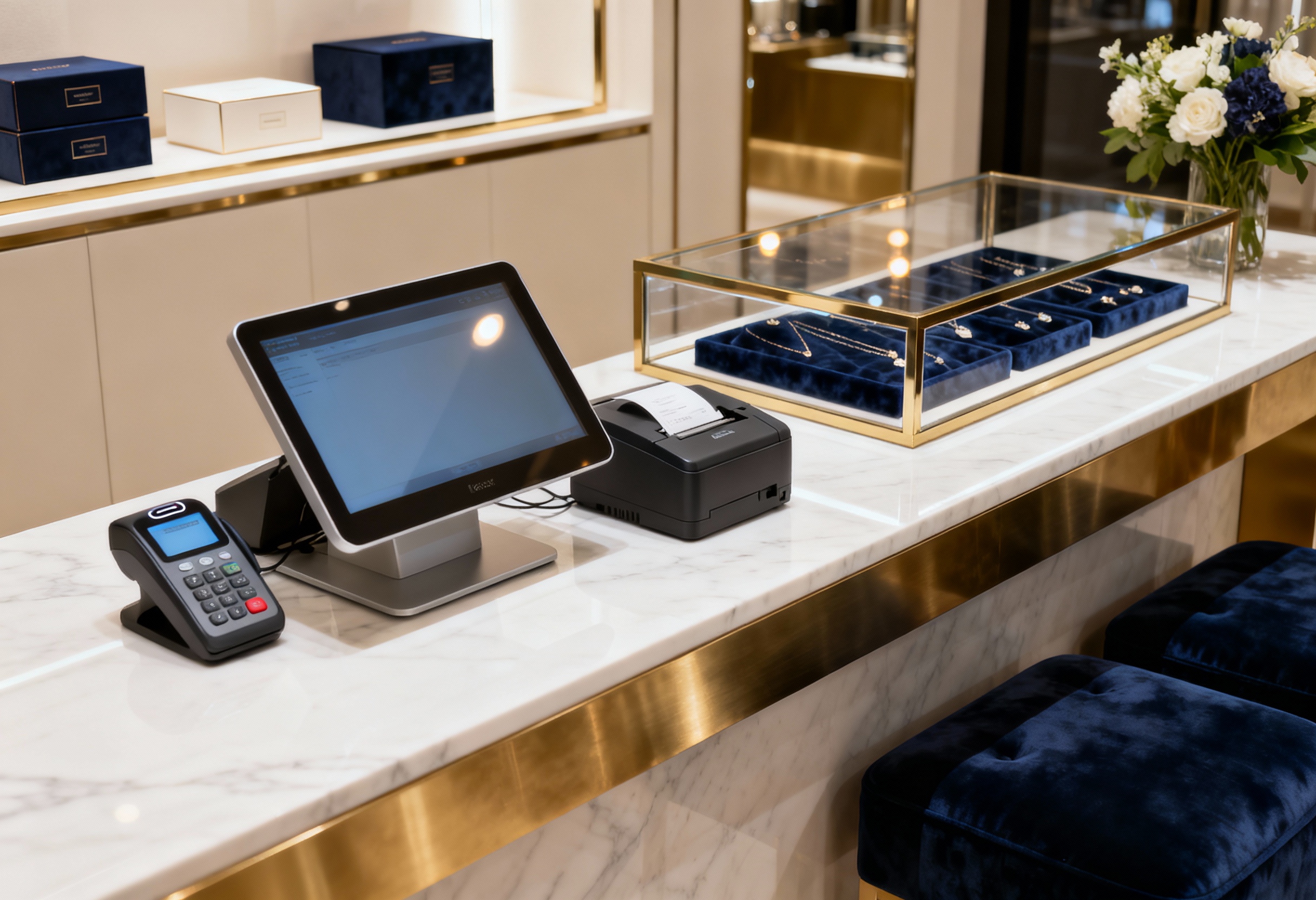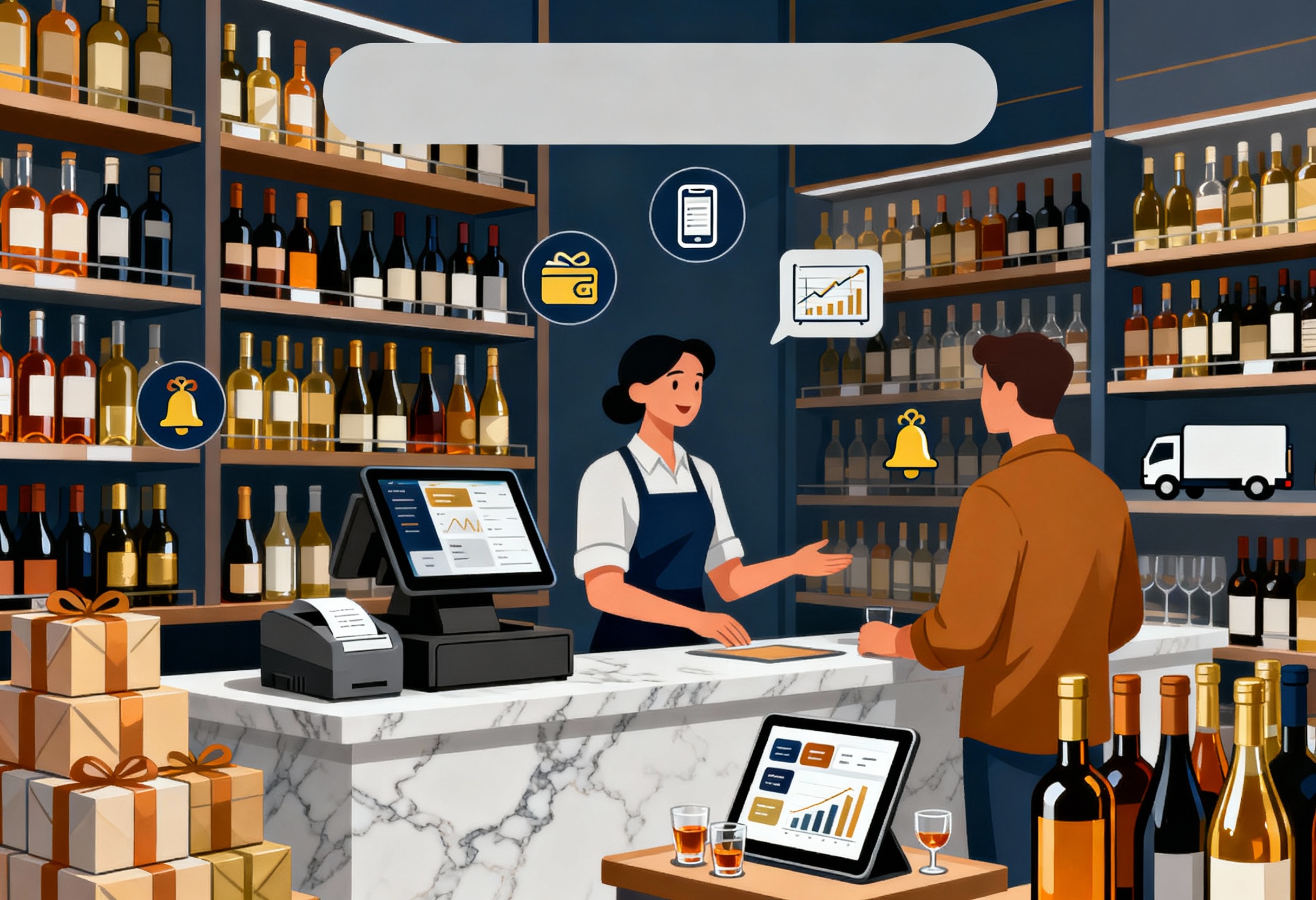The unique demands of pet retail in managing everything from live animal inventory to grooming appointments and specialized nutrition mean a generic POS just won’t cut it. Picking the right POS for pet store helps you stay competitive and keeps operations smooth. We understand that time is money, especially when running a busy pet business.
This guide from ConnectPOS will walk you through the key considerations and steps for making an informed decision without getting bogged down in endless research. We aim to get you up and running with a fitting POS that truly understands the pet world.
Highlights:
- Pet stores manage live animals, services, and personalized products. A POS must support bookings, subscriptions, medical records, and mixed inventory, without adding manual work.
- The right POS for pet store fits how your team sells, restocks, and builds customer loyalty. Key tools include service scheduling, custom barcodes, and pet-specific history tracking.
Pet Store’s Specific Requirements for a POS System
The global pet care market is projected to reach USD 236.16 billion by 2030, growing at a CAGR of 5.1% from 2022 to 2030. The rising trend of pet humanization and increased consumer spending in the household and pet care categories are the major growth drivers.

As the market expands, pet retail is shaped by a distinct mix of inventory, customer expectations, and compliance demands. Unlike general retail, these businesses deal with live animals, perishable items, nutritional tracking, service scheduling, and recurring memberships. A generic POS often creates limitations. A POS for pet store is specifically designed to handle these unique needs, offering tools that align with the operational rhythms of pet-focused businesses.
Requirements That Matter for Pet Retailers:
- Item Variability and Tracking: A pet store handles live pets, frozen goods, grooming products, and prescription diets. Each requires unique tracking, labeling, and storage rules.
- Product Expiry and Recall Support: Nutritional supplements and food items carry expiry dates. POS systems must support batch tracking and recall workflows.
- Customer Profiles with Pet Data: The ability to store pet profiles, medical history, breed info, and dietary needs under each customer account helps drive repeat visits and personalized service.
- Service Scheduling and Staff Allocation: Grooming, training, and veterinary services need built-in calendars and workforce assignment tools linked directly to sales and invoicing.
- Recurring Orders and Membership Handling: Many pet stores run subscription programs for food, grooming, or medication refills. POS systems must handle automated reorders and loyalty schemes tied to those services.
- In-Store and Online Sync: Unified visibility between physical and digital storefronts supports better stock decisions. Customers expect consistency between what they see online and what’s available in-store.
- Compliance and Pet Sales Reporting: For stores selling live animals, some jurisdictions require traceability of origin, vaccinations, and buyer declarations. The POS must accommodate these checks without slowing the checkout process.
- Barcode Support for Microchips and Tags: Integration with pet tag barcodes or microchip scanners can simplify lost-and-found tracking or product matching for specific animals.
How to Choose the Best POS for Pet Store Success?
In 2023, global pet food sales reached around 133.9 billion USD, up over 30 billion from 2020. This growth is driven by increased pet ownership during the pandemic and rising demand for premium, organic, and personalized pet food. As customer expectations grow, so does the complexity of managing a pet store’s inventory and services.
That’s where choosing the right POS for pet store becomes crucial. Generic retail systems often fall short for stores handling live animals, grooming services, and perishable items. The key is to find a POS that matches your store’s real operations without unnecessary features that slow you down.
This guide covers what to look for in a pet store POS that supports your daily workflow, inventory needs, and customer experience.
Fit the System to How Your Store Operates
No two pet stores run the same way. Start by reviewing what you sell, how many locations you manage, and how complex your services are.
- What type of products do you sell? If your focus is on pet food and accessories, tools for bulk inventory and quick reorders will matter. If services or live animals are part of your model, the POS should handle scheduling, compliance tracking, and breed-specific records.
- How many locations do you have? Managing inventory, staff, and reporting across stores from one dashboard will help maintain consistency.
- What’s your budget? Know what you’re prepared to spend upfront and monthly. Value comes from fit, not just price.
A detailed assessment at the start can help you avoid systems that create gaps or force workarounds later.
►►► Optimal solution set for businesses: Multi store POS, Next-gen POS, Inventory Management Software (MSI), Self Service, Automation, Backorders
Ease of Use for Day-to-Day Operations
A POS for pet store that’s hard to navigate slows everyone down, from cashiers to floor staff. A clear layout supports faster service and fewer mistakes.
- Intuitive design: Menus, checkout steps, and functions should be clear without extensive tutorials.
- Mobile compatibility: If you answer questions or assist customers on the floor, mobile tools provide flexibility and cut back on queue time.
Time spent figuring out a screen is time lost helping a customer. A well-designed interface helps your team focus on service, not software.
Inventory Handling That Matches Pet Retail
POS for pet store that works well in fashion or hardware stores may fall short in a pet shop. Between perishable goods, grooming services, and live animal sales, your inventory spans a wide range. The right system should reflect that complexity without slowing down your workflow.
- Real-time inventory tracking: Stay updated on stock levels as items are sold, transferred, or restocked, across all categories and locations.
- Automated alerts: Get notified when key items hit low stock so you can act before shelves run empty.
- Barcode scanning: Reduce human error and speed up checkout with reliable scanning at the register or on mobile devices.
- Automatic purchase orders: Generate reorders based on pre-set rules without needing to review stock manually every week.
- Smart order recommendations: Use built-in sales data to understand which products deserve priority when restocking.
- Min/max stock thresholds: Maintain balance by setting clear minimum and maximum inventory levels per item.
- Integrated barcoding: Assign and manage barcode data across categories to keep the system organized.
- Custom barcode labels: Print item-specific barcodes that fit your labeling layout and shelf setup.
Inventory in a pet store moves quickly and spans many departments. A solid system cuts back on manual work and gives you a better handle on what’s moving and what’s missing.
Customer Management That Goes Beyond Transactions
For pet stores, each customer often represents more than one shopper: there’s the pet owner and their animals. The system should help you manage both. Building long-term relationships becomes easier when the POS for pet store tracks who buys what, when, and for which pet.
Key capabilities include:
- Customer profiles: Track buying behavior, pet details, and service history to support future recommendations.
- Loyalty programs: Encourage repeat visits by assigning points, rewards, or discounts based on purchase activity.
- Marketing tools: Send reminders, restock updates, or promotions directly to your audience via email or text.
These tools support client retention while helping staff deliver service that feels more relevant to each visitor.
Built-In Website Editor with Scheduling Support
Stores that offer grooming, daycare, or pet training benefit from online booking. Instead of managing this manually or through a third-party tool, it’s more practical when the POS includes a built-in editor that covers both sales and scheduling.
- Ease of use: The editor should be accessible to non-technical users, no coding required, just clear controls and straightforward layouts.
- Appointment scheduling: If grooming, boarding, or training is part of your business, the system should include tools for customers to book time slots directly online.
A connected site saves time and helps your store appear consistent whether someone visits you in person or browses from home.
Payment Methods That Match Shopper Expectations
Customers may carry a mix of cards, mobile wallets, or cash, and may want to use gift cards or store credit. Your POS for pet store should support this without friction at checkout.
Check for:
- Multiple payment methods: The system should accept cards, mobile wallets, and cash without requiring extra plugins or terminals.
- Gift cards: Selling and redeeming gift cards helps attract new customers and increases basket size, especially during seasonal campaigns.
The smoother this part runs, the more likely customers are to return.
Pricing Structure That Reflects Real Usage
Cost goes beyond the upfront sticker. A system may appear affordable until hidden fees or restrictive terms surface after onboarding.
Pay attention to:
- Upfront costs vs. ongoing fees: Evaluate everything bundled into the system: hardware, software access, updates, and recurring charges. Be sure you’re comparing full ownership cost, not just the monthly rate.
- Contract terms: Some vendors may require long commitments. If your business needs change, a rigid contract can limit your ability to adapt.
Exploring a system with a no-obligation trial can offer a useful preview before committing. The lowest price doesn’t always equal the best fit, and neither does the highest. The right choice supports your operations without forcing unnecessary add-ons.
How ConnectPOS Empowers Your Pet Store
Running a pet store involves more than just selling products. It’s about managing live inventory, scheduling services like grooming, and maintaining long-term relationships with pet owners. ConnectPOS is a leading POS for pet stores that adapts to the real-world demands of pet retail without forcing you into rigid workflows or generic templates.
- Real-time tracking for live and consumable inventory: Whether it’s dog food, aquarium filters, or hamster bedding, stock quantities update instantly across all locations and sales channels, no manual reconciliation needed. With a solution like ConnectPOS’s Inventory Management System, pet retailers can easily manage inventory in real time and avoid stockouts or overstocking.
- Support for grooming and in-store services: Schedule pet grooming, training sessions, or consultations directly within the POS. Staff can check availability, take bookings, and assign service staff, all from one interface.
- Custom barcodes for store-specific SKUs: Pet stores often carry niche brands or mix-and-match bundles. With ConnectPOS, you can create custom barcode labels for your shelf stock or service packages without depending on supplier formats.
- Integrated with loyalty tools for pet owners: Track what each customer buys, note pet names or breed-specific needs, and run personalized loyalty programs. This helps staff make informed suggestions during repeat visits.
- Inventory sync between in-store and online: If you’re selling online, ConnectPOS keeps product counts and order statuses aligned whether it’s pet food for pickup or a toy shipped across town.
- Adaptable API for specialty workflows: ConnectPOS allows integration with vet systems, pet insurance providers, or even local delivery partners, so you’re not boxed into one operating model.
- Branding flexibility for pet retail networks: Franchise owners, wholesalers, or consultants in the pet space can reskin the entire POS under their brand. The login, dashboard, receipts, and communication touchpoints all reflect your identity, not ours.
FAQs: POS for Pet Stores
Why does my pet store need a POS system?
A POS system helps you manage product sales, pet services, and customer data, all in one place. Whether you’re selling pet food, grooming products, or offering training and spa services, a POS keeps operations smooth and efficient.
Can I use the POS system for grooming or pet services?
Yes. Choose a POS with service scheduling, staff calendars, and notes for each pet. This is perfect for grooming, training, pet boarding, and vet appointments.
Do I need special equipment with a POS for pet store?
A basic POS setup for your pet store may only need a tablet or smartphone. For a more complete system, consider adding a receipt printer, barcode scanner, cash drawer, and customer-facing display to streamline checkout and enhance customer experience.
Conclusion
A misaligned POS causes friction in places you can’t afford, such as inventory gaps, slow checkouts, lost bookings, or customer churn. A well-chosen POS for pet store helps you manage your specialized inventory, book services, and keep your loyal customers happy, all while simplifying daily tasks. Making a swift, informed decision allows you to dedicate more time to what truly matters: providing excellent care and products for pets and their owners.
ConnectPOS builds retail tools grounded in real operational needs, not tech buzzwords. If you’re ready to equip your pet store with a system that thinks the way your team works, contact ConnectPOS today.
►►► Optimal solution set for businesses: Shopify POS, Magento POS, BigCommerce POS, WooCommerce POS, NetSuite POS, E-Commerce POS



